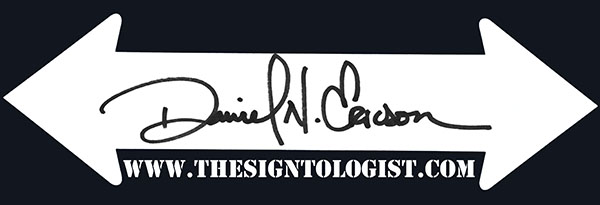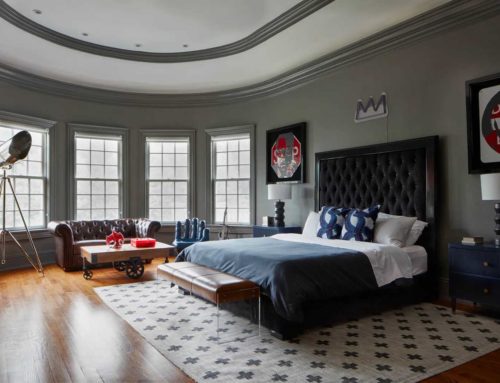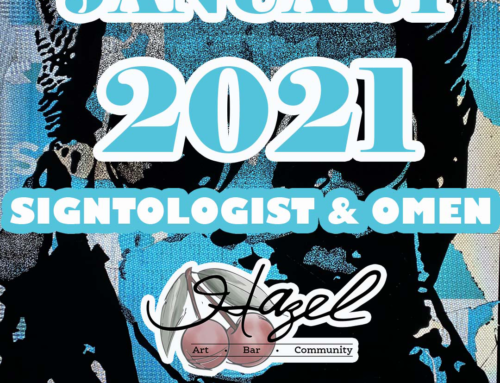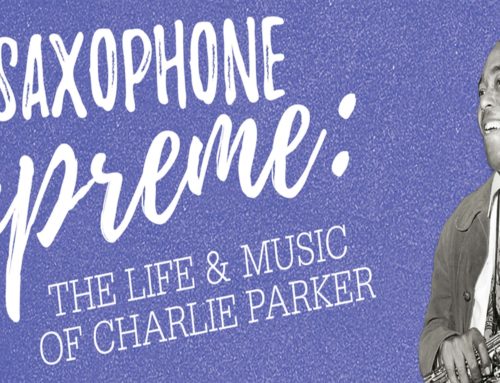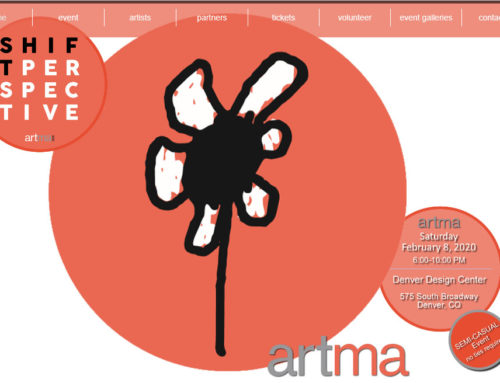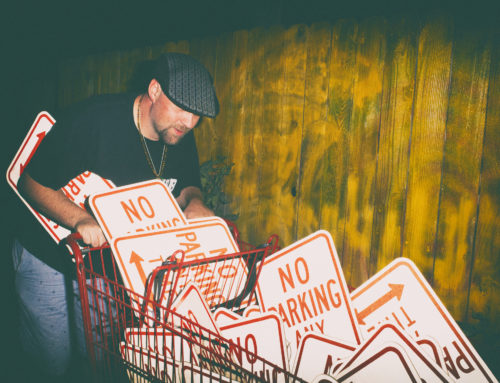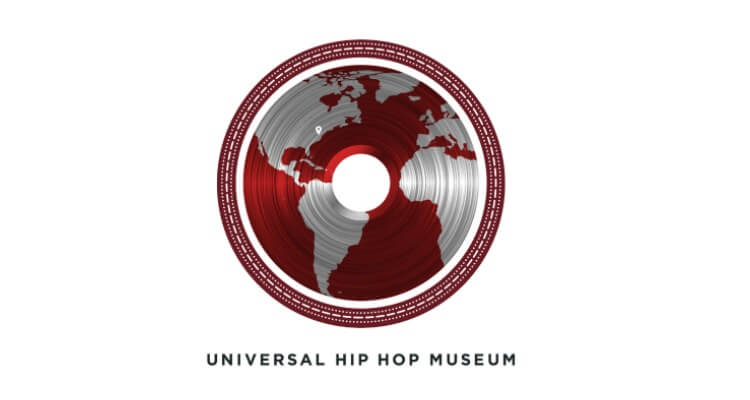
Old & New, Past & Present in Art and Hip Hop: How Dan “The Signtologist” Ericson Reinvents & Repurposes
Full Article Here:
In Archives & Collections
“My radio, believe me, I like it loud
I’m the man with the box that can rock the crowd
Walkin’ down the street, to the hardcore beat
While my JVC rocks the concrete.”
“I Can’t Live Without My Radio” by L.L. Cool J on Radio, released 1985
Today and yesterday. Now and then. Digital and analogue. And as I like to say, current and classic.
Music, particularly R&B and Hip Hop, benefits greatly when the what, who, and how of the present pair with that which and those who preceded them. With so many ways to make art and music, labels and limits do not apply. It doesn’t matter how much or how many are involved; it’s the pairing that leads to something new and remarkable.
This – the pairing of unexpected elements – has been happening for nearly 20 years at the hands and from the mind of Dan Ericson, also known as DUNN the Street Artist, Streetsignartist, and, courtesy of Black Thought, the Signtologist. A painter and the creator of a genre that combines art, urban life and culture, and Hip Hop, Dan paints portraits and scenes on street signs and found materials. The result recycles the foundation structure, turning it into something that honors and celebrates the public figures – including Hip Hop pioneers and icons – that inspire him. Besides the personal collections of Spike Lee, Rakim, De La Soul, Digable Planets, Pharrell, and Wyclef Jean, Dan’s artwork is part of The American Jazz Museum’s permanent collection.
We spoke at length about his work, where it comes from, how it tells unexpected stories, and Hip Hop.
As previously mentioned, Dan originally created under the names of, and was known as, DUNN and Streetsignartist. The Signtologist has a different vibe: it’s both literal and complex. Dan remembered, “The name came from Black Thought of The Roots. I met him in Boulder, while waiting on a cab outside The Fox. I had a painting of The Roots, so I approached him. He signed a record sleeve for me and on it he wrote ‘To Dan The Signtologist.’ Now, until this point I was calling myself DUNN, my nickname from school, or Streetsignartist, which was a mouthful. I asked Black Thought, ‘Can I use The Signtologist?’ He said, ‘Sure if you give me a ride to my hotel.’ So I grabbed my car. And that’s how I became The Signtologist.”
His synchronous interaction with Black Thought, an exceptional MC, is not the only reason The Signtologist is featured in UHHM’s communications: he is a Hip Hop head. He is part of the culture, and Dan has generously donated two of his paintings to the museum.
While we spoke about Hip Hop from the beginning of our convo, we dug deep when talking about the creation of Dan’s art. I was curious why the street signs’ original text and imagery should coexist with or be replaced by pictures of Hip Hop artists. Dan shared, “Fast forward to college, and I began to try to figure out how a white guy from a cow town can fit in Hip Hop culture. I had always been captivated by Hip Hop and graffiti, and none of that culture had been present in my school studies.” This horse led himself to water: “Interacting with whatever content the artists provided – including collaging pieces from albums, images, and writings, artists’ cover art, and liner notes – is how I started with Hip Hop.” Like begets like. Dan’s being a painter connected him even more to Hip Hop: “Once I started exploring this medium, so many doors opened for me. I was able to meet numerous Hip Hop icons that I listened to and respected.”
While Dan grew up and resides in Denver, and I’ve got Cleveland and New York City as my geographical roots, we share a dedication to and fascination with urban surroundings and elements. While we discussed how where we come from feeds how we come up, Dan was passionate: “I grew up in Denver. Since I was young, I’ve always been inspired by the pace, sounds, visuals and vibes of this city. I grew up and lived in what was, at the time, a cow town. It’s grown and changed since then. I’ve always been enamored of big cities, like New York, and what I think the elements of life in those cities are I’ve sought in Denver.” Our towns have more in common than we realize.
We talked at length about how what Dan calls “urban elements” help to create pictures that portray urban culture. Dan’s method is “taking a piece of the city and repurposing it to illustrate someone in the city or something happening in the city.” The ways we get around in our cities – on foot, in the car, via public transportation – affect our observation and understanding of the place, and its people. Dan told me, “For the longest time, I didn’t drive: I walked or took public transportation. I listened, on my headphones, to Hip Hop and heard what the artists shared about life in their cities. Hearing them talk about their neighborhoods – litter, poverty, gentrification – got me thinking about what those were where I lived.”
Real artists’ work can be fueled by empathy.
Sometimes the application of urban elements, which Dan calls “pairing up,” is arbitrary. And there are times when it’s serendipitous.
He found a street sign that had been shot three times, each hole having been made by a different caliber bullet; Dan painted an image of The Notorious B.I.G. on it. Another example of his artwork being the opposite of random is his painting of Tupac Shakur. The canvas here was a slow winding road sign. Not only did the sign have bullets on it when found, Dan’s portrait of Tupac partially covered the sign’s text. The result was something of a caption: DI SLOW R.
All slow winding road signs say “Die Slower.”
Speaking to the past and the present, today these images could be created, snapped, edited, and formatted on computers and phones. And to feel the steel and see the indentations in person is far more powerful than perfect color saturation and pixilation that can generate thousands of likes.
I have lived more than half my life in New York City, and I’ve known it well since I was in college. Why? Because I’ve walked in and around the city, Brooklyn, Queens, and the Bronx since 1992. The analogue approach has connected all of me to the boroughs. Whether you call it old school or traditional, there is value in how things once were done, in what we can learn from it and sometimes when we replicate it now. Dan’s paintings are an example of how a tangible, made from scratch approach to making art generates emotion for its audience.
You can get close to Dan’s signs.
You can look at them on both sides.
You can see where the painting began, where it came from.
You may as well be in Dan’s studio while he’s painting. While we discussed the influence of this – the close interaction with artists and art – Dan and I got into the early days of Hip Hop. Dan reminded me, “How the Hip Hop experience was formatted and presented – you learned about artists from mentions at gigs, you had to go to a record store, ask questions about the artists, see the albums – was the way it was partially (or primarily) because we weren’t living in a digital world. We couldn’t Google things or hear them on Spotify or Pandora and download torrents and stream.” Amen, brother.
When I shared how I’ve been walking the line between digital and analogue since 1999 when I began working in digital advertising, Dan and I reminisced about the 90s and how the learning, social, and artistic experiences were different, and sometimes (or often) more cherished, than they are now. Dan declared, “The 90s introduced me to and molded me in Hip Hop. The genre’s 90s era was very influential: it still had the element of album art. Since then, I’ve had to adapt my experience and my work. The tangible qualities of having art in hand – where one can touch it and feel it – are becoming very rare. And for people who have never seen a street sign up close, they can do that with my art and experience someone or something in Hip Hop.”
Artists who want to connect with their fans, believers, and audiences have a responsibility to develop a relationship with them via, or despite, technology. Dan shares my belief here: “We’re more connected than ever today, and when we’re sharing space if we’re on our phones, we’re more disconnected than ever. It gets in the way of human relations and human experiences. Sometimes I refer to it as the digital leash.”
The coexistence of live, in-person music and formatted for device recordings is something of a luxury, because we can have them both. And nothing can replace the complete sensory experience of time-honored art. Dan said, “Coming from an analogue upbringing, I appreciate the tools that aren’t digitized. Example: I can go to the library and find a book about something I could also read online. And I choose to go to the library because that’s one way I can really turn things on by turning something off.” Again, amen.
Besides making the paintings and showing them around the world, via speaking and teaching Dan informs, empowers, and inspires young people who want to perform, produce, and make art that is inspired and moved by Hip Hop. He appears everywhere from middle school art class students to talk about art and the creative process, to presenting to attendees at Denver’s First Monday Art Talk, to an event for interior designers where his topic was repurposing urban materials for lifestyle and exhibition. He has collaborated with Lordz of Finesse in Denver and The Bronx Boys in New York City by providing artwork at multiple Hip Hop events.
“Hardcore BoomBox” This gift to UHHM by the artist is made of two Denver street signs, the handle is made of the sign from the street on which he grew up. Made of aluminum and weighing between three and five pounds, this was made for “The Boombox” at Richard Beavers Gallery. Photographed by Dan Ericson
When asked what it means to him, in the context of Hip Hop history and culture, to be a painter and storyteller, Dan talked straight: “Like the artists and storytellers in Hip Hop culture before me, I feel it’s my duty to inspire the future artists and storytellers. I never thought I would be part of Hip Hop except as a fan or even a painter or storyteller. Yet here I am. I’m honored to use my creativity as a personal outlet of expression, and as a gift I’m able share with the world.”
And share he has with two paintings – “Hardcore BoomBox” and “My Radio (L.L. Cool J)” – he has given to the Universal Hip Hop Museum. Like much of Dan’s artist journey, it was Hip Hop that brought him to the museum’s community.
Dan’s friend Neil McIntyre, dba Mr Kneel, opened for Kurtis Blow at The Cleo Robinson Dance Studio in Denver, 2014. Dan presented Kurtis with the painting shown above. When Neil and Dan learned that Kurtis was a founder of UHHM, Neil reached out to him. Kurtis remembers Dan’s artwork and Dan was part of the crew.
These paintings were created for a group show, “The Boombox,” curated and presented in Brooklyn by known curator Richard Beavers. The show honored Hip Hop icon “Uncle” Ralph McDaniels, and one of Dan’s artworks was gifted to Uncle Ralph. The boombox was a significant part of Hip Hop in the 80s; evidence of this can be seen forever in Do The Right Thing, in the scenes where Radio Raheem (RIP, Bill Nunn) plays only “Fight The Power“ by Public Enemy on his enormous boombox. Bonus note: the sign on which “Hardcore BoomBox” was painted on the sign from the street where Dan grew up in Denver.
“My Radio (LL Cool J)” Gifted by the artist to UHHM, this painting depicts, according to the artist, “A tangible thing that plays music, when back in the day, that’s what we had. Now it’s in the cloud or stream. The boombox was a Hip Hop accessory. It made a way for people to share what they heard and express their Hip Hop.”
Appropriately, these paintings’ historical context is, according to Dan, rooted in boomboxes and the role the equipment played in the music experience: “What we use to play our music is always evolving. At one point, the Boombox was king.” When asked why L.L. Cool J was the subject, Dan replied, “He repped the boombox well.” Not only did I agree with him, we share a love of Radio, L.L.’s first album. Released in 1985 whose cover is the picture of a boombox, and the home of “I Can’t Live Without My Radio,” an amazing song quoted above.
The artists, albums, and songs that resonate most with Dan are A Tribe Called Quest, De La Soul, Wu-Tang Clan’s Enter the 36 Chambers, and Public Enemy’s Fear of a Black Planet “was the first thing that got [him] hooked on Hip Hop.”
Follow Dan “The Signtologist” Ericson on social and check out his website. The Universal Hip Hop Museum thanks Dan for his generous gifts of two paintings.
Kate Harvie is a contributing writer for Universal Hip Hop Museum’s digital newsletter. She is the author of a book, director, communications and strategy at The Vanderbilt Republic, and community manager at Suit & Artist.

